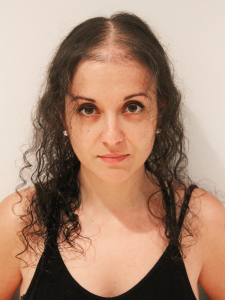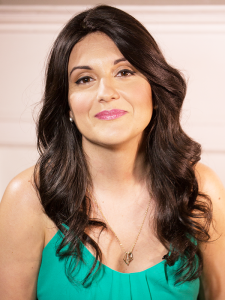Hair loss affects more than 40 percent of American women; problem may be more than an appearance issue, says dermatologist
By Deborah Jeanne Sergeant

Many men with thinning hair shave their heads or just accept thinning hair as part of middle age.
For women, the social stigma surrounding hair thinning and hair loss can make the experience emotionally devastating.
Forty percent of Americans with hair loss are women, according to the American Hair Loss Association. For most of them, it’s overall thinning, not the horseshoe-shaped pattern of baldness common to men with male pattern baldness.
But they don’t have to resign themselves to thinning.
UR Medicine dermatologist Mary Gail Mercurio said that women should talk with their doctors about their hair loss concerns because it may be more than an appearance issue.
“It may be indicative of an underlying condition,” Mercurio said.
Causes could include physical stress, eating disorders, thyroid or hormonal disorders and childbirth. Discussing these possible factors could help find ways to decrease shedding.

“This type of loss is known as a telogen effluvium and while it can be quite alarming to see all the hairs coming out and can last for several months, it is almost always reversible and normalizes over time,” Mercurio said.
Some types of medication may cause thinning. Asking about alternatives could help slow shedding and restore what was lost.
Androgenetic alopecia, commonly called female pattern hair loss, involves thinning on the top of the head. Women may notice their part seems wider than it used to. Usually, this happens gradually; however, an abrupt case can indicate a hormonal change. Mercurio recommends minoxidil, available over the counter.
“This gives many women the impression that it is ineffective because is so easy to obtain, but this is not the case as many women are pleased with the results,” Mercurio said. “It is very safe but must be applied daily and indefinitely or the hair that resulted from its use will fall out.”
Another option to help those with female pattern hair loss is light-based technology. Mercurio said it’s delivered with a comb or cap to stimulate re-growth.
Blood platelet injections have also shown good success, as a patient’s own blood cells are injected into the scalp skin to stimulate growth.
Alopecia areata, an autoimmune disease, causes patchy hair loss on the head. Alopecia totalis bares the entire head and alopecia universalis causes all of the body’s hair to fall out. Some people see patchy re-growth and even times of remission with substantial re-growth. Mercurio said that the patchy hair loss of alopecia is often treated with steroid injections into the places missing hair.

Maintaining the existing hair, as well as using protocols to encourage growth, can help clients while they work on their treatment, according to Pam Spitali, hair replacement specialist and manager of Integrated Hair Solutions in Rochester.
After an analysis to help determine the issue, Spitali recommends a healthful diet, supplements, sufficient sleep and exercise. These can all relieve stress and improve overall health, she said.
Usually, clients need a combination of different treatment options, which could include low-level laser light therapy, topical scalp treatments, and supplements to stimulate hair follicles.
For some clients, using hair extensions can create better fullness. Spitali uses gentle methods that don’t damage existing hair.
“If someone’s hair loss is beyond something we can help them re-grow, we create a scalp and hair prosthesis,” Spitali said.
They can be partial or full head pieces, depending upon the client’s needs and desires. Rather than the previous generation’s “wiggy” looking hairpieces, these custom prostheses use the hair type, density and color that best suits the clients. The pieces feature a thin, breathable membrane made in Italy with anti-bacterial properties. The piece is affixed to the scalp with a medical-grade, FDA-approved adhesive so clients never need to fear it slipping.
“They live in it,” Spitali said. “It becomes part of them.”
Made with genuine human hair, clients can wash and style it just like hair growing from their heads. About every five weeks, clients return to Integrated Hair Solutions to have the prosthesis removed, their scalps cleaned, and the prosthesis re-applied, all in a private room.
“Our goal is to reduce hair loss and prevent thinning in the future,” Spitali said.
Her office provides private consultations at no charge to anyone who wants to do something about hair loss.
